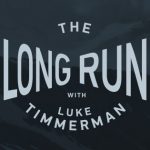A Swing and a Miss from the CDC

Mike Pellini, managing partner, Section32
Please help me understand the value of OUR Centers for Disease Control and Prevention in 2020.
It’s baseball season — sort of. We have been waiting and waiting for the CDC to step up to home plate. The bases have been loaded for 7 months, and their fans have been waiting. The CDC is supposed to be our national cleanup hitter.
Yet, instead of trying to hit the ball out of the park for the grand slam, they have either struck out each time or tried for the occasional bunt single. This week, they decided to not even leave the on-deck circle.
Here’s the situation. Millions of kids and parents are seeking solid, science-based recommendations on what to do about school this fall during the pandemic. The CDC responded to this challenge by issuing revised guidance on Aug. 26 that said asymptomatic people who have been exposed to an infected person don’t necessarily need to get tested.
That revised guidance — to do less, not more testing — reportedly came from the White House and top levels of the Department of Health and Human Services. Maybe it did; maybe it didn’t. What matters is that the CDC issued the information.
Scientists were baffled, as the new guidance makes no sense. Within hours, CDC director Robert Redfield backpedaled, telling reporters that “testing may be considered” for anyone who has been exposed to the virus.
In a statement, Redfield said:
“Everyone who needs a COVID-19 test, can get a test. Everyone who wants a test does not necessarily need a test; the key is to engage the needed public health community in the decision with the appropriate follow-up action.”
The public needs firm guidance. This statement is so wishy-washy, it is meaningless.
Is there any real value left for this aging, high-priced player?
Stats in baseball don’t lie. Stats in healthcare generally don’t lie either. Roughly 40% of the spread of COVID-19 virus is from asymptomatic people. In a country with 5.9 million confirmed cases of COVID-19, and many more unconfirmed cases, it’s safe to say we have several million people capable of spreading this disease without even knowing they are sick. That’s undebatable at this point (though I know even the most basic facts are seemingly up for debate these days.)
Let’s recap some of the most visible and critical missteps by the CDC since the start of the pandemic, and let’s consider the consequences.
- Misstep 1: Failing to swiftly deliver an accurate diagnostic test. This failure, from January and February, has been well documented.
- Result: At least a 6-week delay in the availability of the initial COVID-19 tests for the public. That delay allowed the disease to spread far and wide from its initial ports of entry, undetected. This resulted in a constant game of catch-up in efforts to implement a serious testing/tracing/isolation strategy, which still hasn’t been implemented at the national level.
- Misstep 2: Months into the pandemic, the CDC recognized the data being reported was a combination of viral and serology testing.
- Result: Public COVID-19 data on which supply allocation decisions were being made was inaccurate. As a reminder, viral diagnosis generally spots current infections with the virus, while serology diagnosis generally tells us about infections that occurred in the past, and which prompted the patient to develop antibodies to the virus.
- Misstep 3: The CDC has been muzzled from the start, unable to communicate directly and forcefully to the American people. No one from the CDC has provided clear guidance to educate the public on the appropriate utilization of serology versus viral testing.
- Result: Public confusion on how to use each testing type, as well as the value of each approach.
- Misstep 4: The agency has failed to produce appropriate and adaptable testing guidelines for workplaces and community organizations, including schools.
- Result: Our businesses and local schools are flying blind and on their own. Most are developing their own testing guidelines from scratch and with limited to no guidance from the federal agency with the world’s best expertise in epidemiology. Schools are facing financial risks from donors and others who wonder why their policies appear to be out of step with the CDC, regardless of how inconsistent the agency’s guidance may be.
Now we have to deal with this latest blunder — actually discouraging testing for asymptomatic individuals who have been exposed to a known infected person. Clearly, these people are at high risk of infection to themselves, and they pose a risk of infecting others — potentially many, many others if they show up unmasked, at a large event, especially indoors.
Why not test these people to reduce the chance of them becoming spreaders, or even superspreaders? Instead of making this common-sense recommendation, the CDC just walked off the field and did not even demonstrate an effort to hit the ball.
Our nation is at a loss. On what scientific justification did they make this decision?
We know “The key to containing the virus is how effectively a country builds up systems for testing, tracing and isolating potential virus carriers, while establishing clear safety rules as the economy reopens.” (WSJ)
Let’s face it; the CDC has clearly demonstrated it either doesn’t have its head in the game, or it is a cleanup hitter that has been forced onto the bench.




